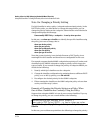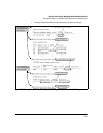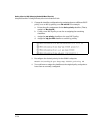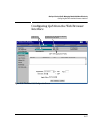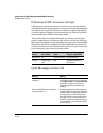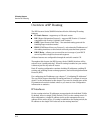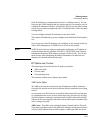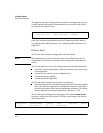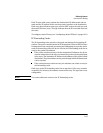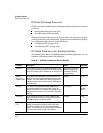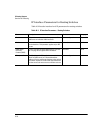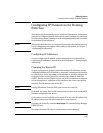
IP Routing Features
Overview of IP Routing
Overview of IP Routing
The HP Procurve Series 5300XL Switches offer the following IP routing
features:
IP Static Routes – supports up to 256 static routes
RIP (Router Information Protocol) – supports RIP Version 1, Version 1
compatible with Version 2 (default), and Version 2
OSPF (Open Shortest Path First) – the standard routing protocol for
handling larger routed networks
IRDP (ICMP Router Discovery Protocol) – advertises the IP addresses of
the routing interfaces on this switch to directly attached host systems
DHCP Relay – allows you to extend the service range of your DHCP
server beyond its single local network segment
All these features are configurable through the switch’s console CLI.
Throughout this chapter, the HP Procurve Series 5300XL Switches will be
referred to as “routing switches”. When IP routing is enabled on your switch,
it behaves just like any other IP router.
Basic IP routing configuration consists of adding IP addresses, enabling IP
routing, and, enabling a route exchange protocol, such as Routing Information
Protocol (RIP).
For configuring the IP addresses, see chapter 7, “Configuring IP Addresses”.
The rest of this chapter describes IP routing and how to configure it in more
detail. Use the information in this chapter if you need to change some of the
IP parameters from their default values or you want to view configuration
information or statistics.
IP Interfaces
On the routing switches, IP addresses are associated with individual VLANs.
By default, there is a single VLAN (Default_VLAN) on the routing switch. In
that configuration, a single IP address serves as the management access
address for the entire device. If routing is enabled on the routing switch, the
IP address on the single VLAN also acts as the routing interface.
16-2



